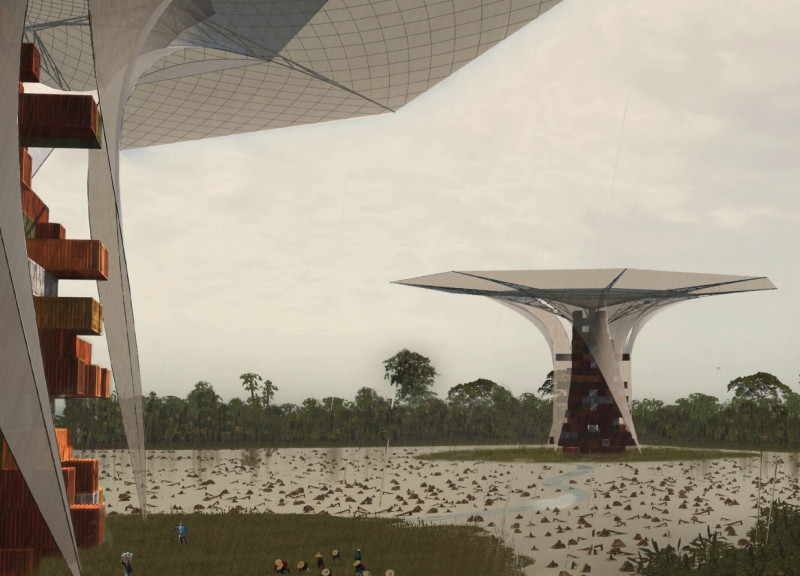5 key facts about this project
The Skyforest project is located in Brazil and seeks to address the serious issue of rainforest damage caused by slash-and-burn farming. The design combines living space and agricultural functions in a central tower, promoting sustainable practices in a vulnerable ecosystem. It aims to bring together human needs and environmental care, creating a balanced approach to land use.
Design Concept
At the heart of the design is a vertical structure that minimizes impact on the land while making the best use of available space. Different activities are stacked in layers, including areas for farming, administration, and community living. This arrangement supports effective practices and encourages interaction among residents. The tower operates as a single unit, fulfilling various needs for those who inhabit it.
Water Management System
An important aspect of Skyforest is its water management system. The building features a water tower that captures rainwater through an umbrella-like design. This collected water is redirected into nearby rivers and also used for irrigation. By ensuring a reliable water source, the system aids in sustainable agriculture, helping to maintain crop productivity and support local wildlife.
Protective Features
The structure is wrapped in a protective membrane that shields it from harsh conditions like intense sunlight and heavy rains. This feature helps to safeguard the soil beneath the tower while creating a stable environment inside. The umbrella structure allows for optimal conditions for plant growth, reflecting a commitment to restoring the ecosystem.
Materiality
The central tower is built primarily from recycled shipping containers, highlighting a sustainable method of construction. This choice reduces the impact of building new materials and promotes efficient use of existing resources. The modular nature of shipping containers allows for flexibility in design, ensuring the living spaces are functional and adaptable.
The visual form of the tower resembles the protective canopies found in natural rainforests, helping it blend with the surrounding landscape. This design choice enhances its environmental role, connecting architecture with nature.



















































